Groundbreaking: The Calendar of Daily Fractures
Artist and photographer Jiamu Wu cracks open the deep observation of road surfaces that grew into the project Daily Fractures, evolving into a meditation on the materiality of time and the dimensions of vision.
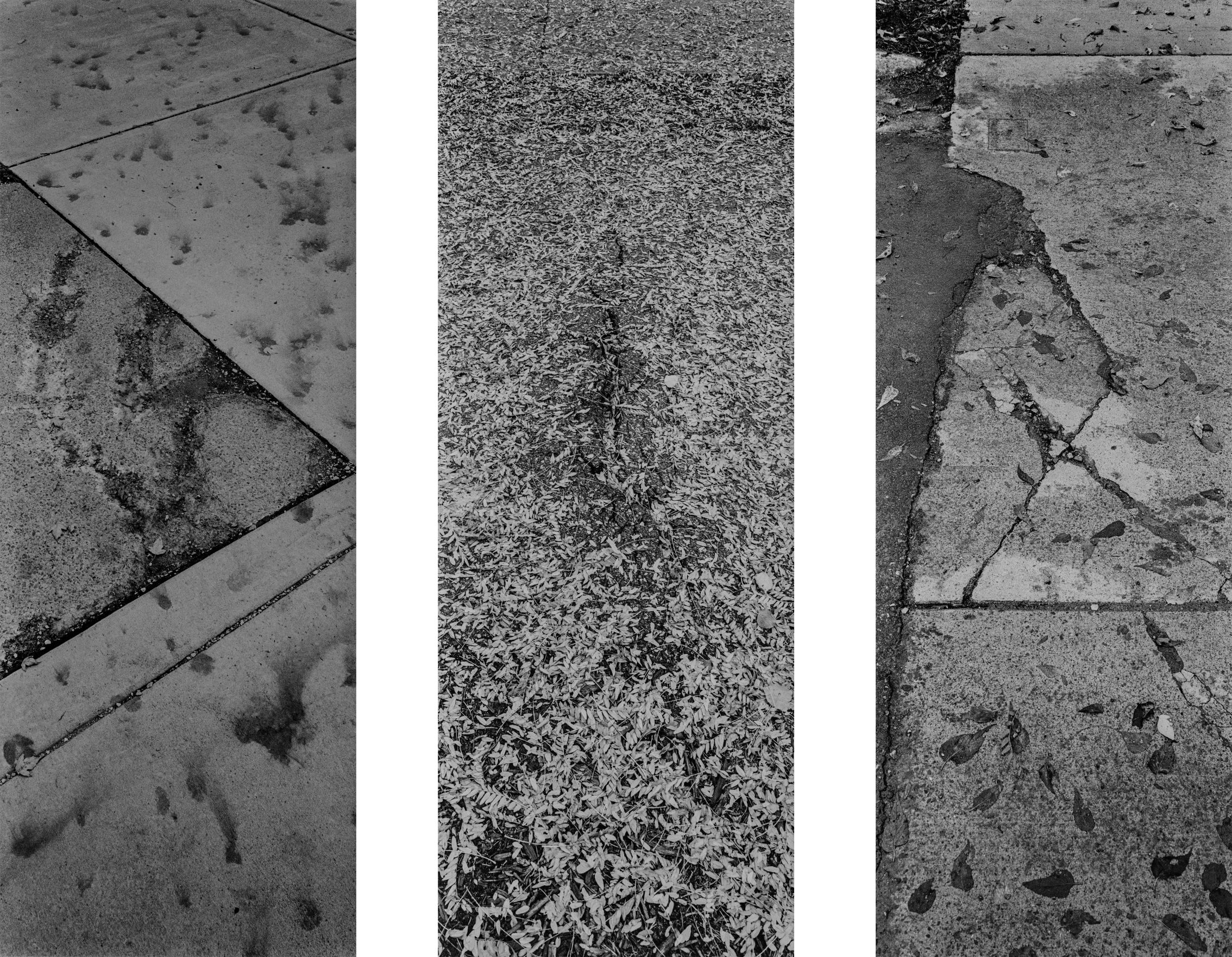
1
It was that on that nameless road. The cracks were growing towards me like a claw reaching, like roots stretching, like arrows shot. I was hit—with an experience of that instant rupture/rapture—with something that’s so swift and intimate, overwhelming my senses. With the shock comes a kinship that tightens me to these cracks on these surfaces.
I see them start from a sewer hole. A misfit seed that started growing in the middle of a mundane gray expanse, this punctum disrupts the linearity of the ongoing road, and brings disruption with a contrasting material that reflects the light differently. It shines on the indifferent formulaic streets, making cracks and fractures that so swiftly charge on and tear apart
Nobody sees how exactly these cracks happen on the road, as nobody has ever seen how exactly trees grow in the air. We know by seeing the differences, by comparing and contrasting. We can never realize the ongoing crawling and reaching that happens right before our eyes. But we finally see the tall trees and the long cracks, we see the trees too tall and cracks too long. We see by slices of time.
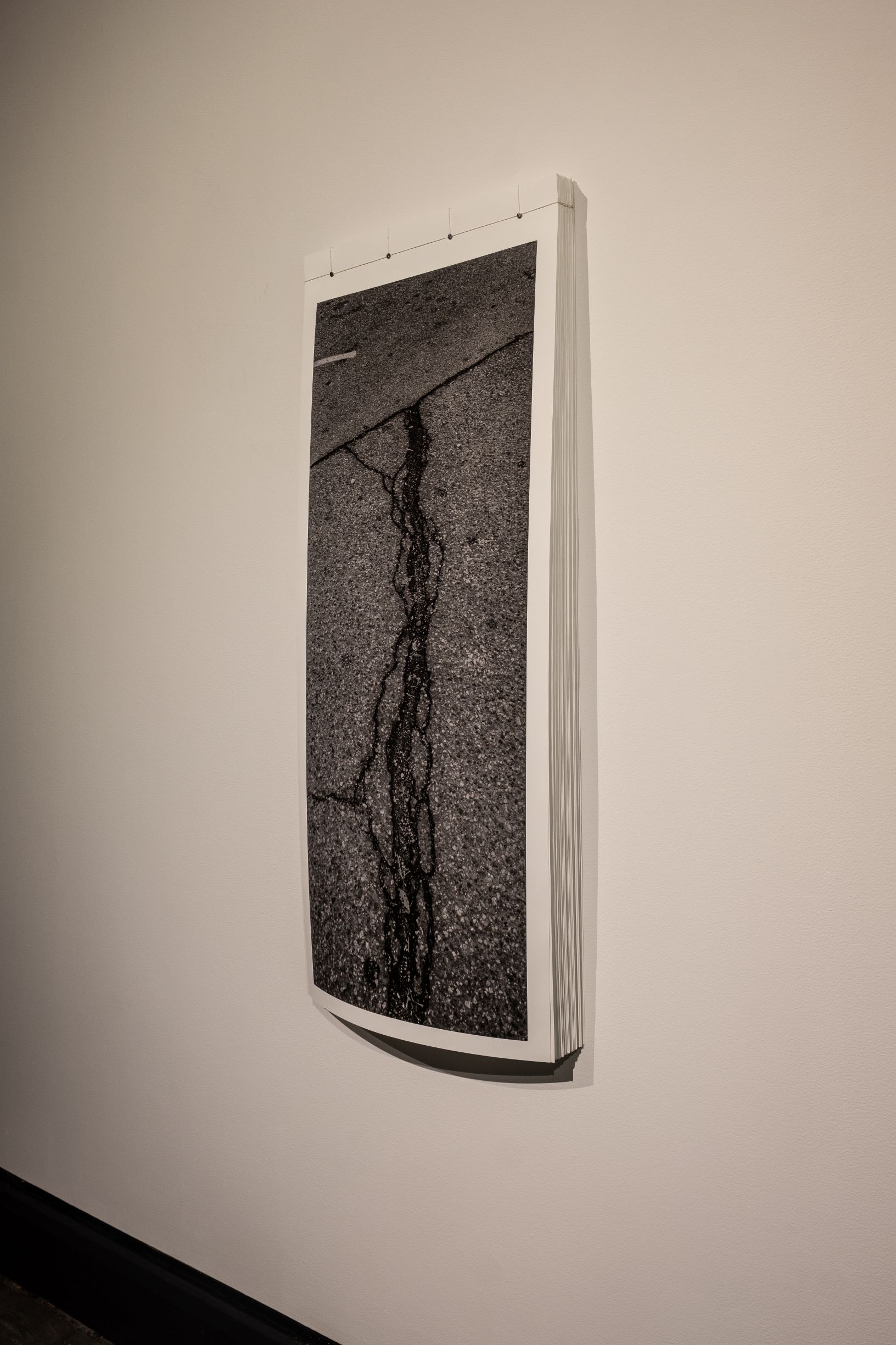
And what are these cracks? Trees stand tall and announce their being with their physical bodies, but cracks are just part of the road. Is it a cleaning and flushing out, or a separation and detachment? Rejecting being part of a larger body by becoming a container? The cracks empty themselves by shadowing and trapping the light, revealing a dirtier and deeper underneath.
And how do these cracks come to be? Crushed and trampled, stampeded and ignored, the result of a constant, invisible internal force. Overcrowding leads to shifting up and down, stepping forward and backward. But this stepping back distinguishes the cracks from the grayness overall, makes me insert myself into these traces. Flying, following, jumping in and out. The tracing gaze recreates the founding and the breaking, the predetermined rise and fall, an inside and an outside.
I dive into these cracks too deep and it seems to me that the only way to soothe this pain of falling in them is to turn my camera towards them. To build a giant collection of them and distort them with the mechanical eye. To recreate the created, and to usurp them by dangling between representation and abstraction. To construct with them a cohesive present and history, a harmonized becoming and origins. To accumulate this overwhelming sense of the mundane road and to display the cracking of this everyday surface over and over again. To create a consistency that is throughout the surface, and to find a becoming that is in all directions—a shimmer of possibilities that doesn’t follow the past momentum and doesn’t hint at the upcoming. All are distinguishable, yet all are connected.
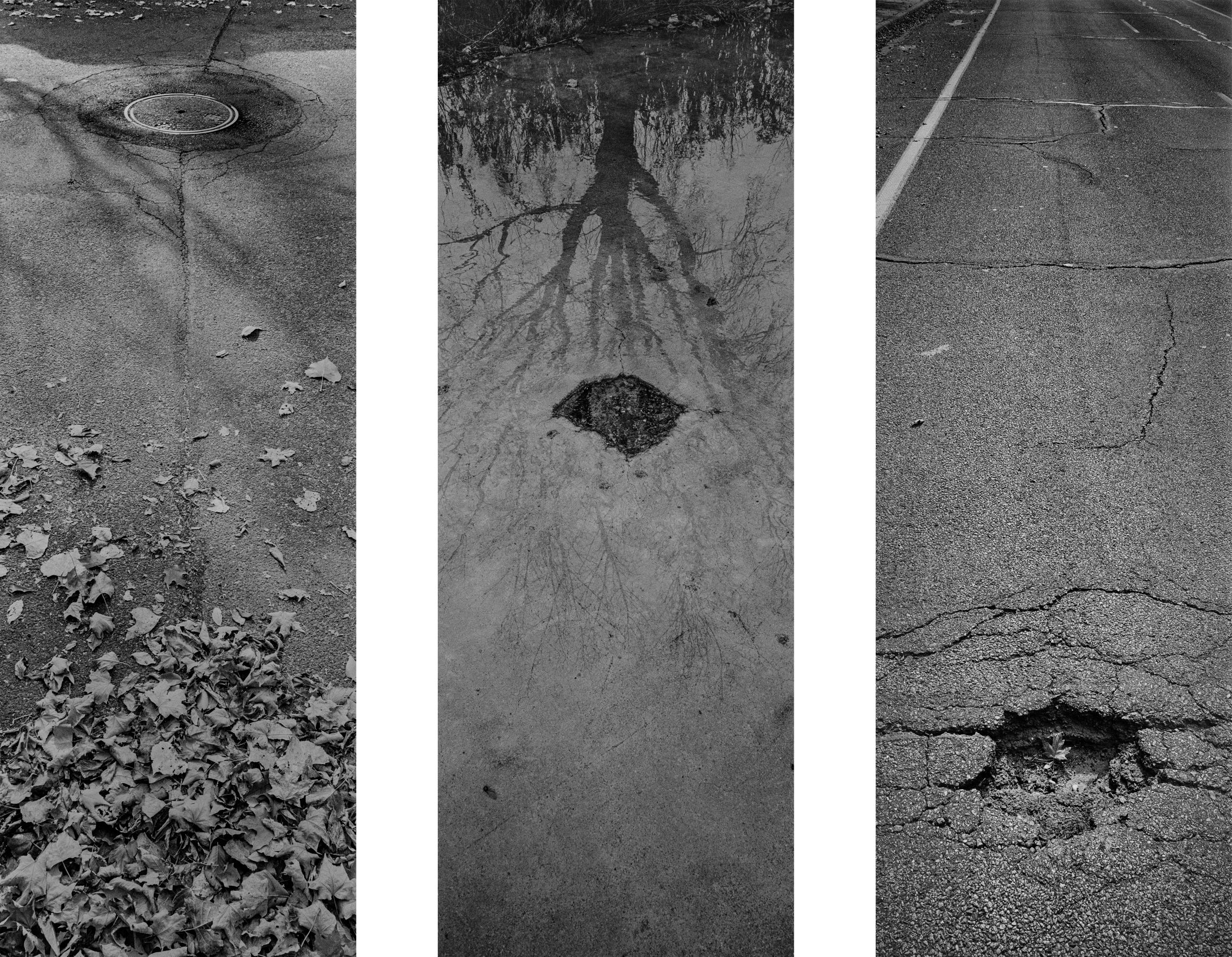
2
I thought of the calendar in my grandparents’ house. Not a specific one, as every year there would be a new one. A traditional hand-tear calendar that has every date printed on a separate page, and every day, one is supposed to tear down one page to mark the progress of time. I can never remember to do that. The passing of time and our ridiculous mock-up in an attempt to mark, trace and remember it. By tearing one page down, do we lose it, forget about it or overcome it? Where do all those torn down pages go?
I began to mock up this mock-up of time. I stacked 365 of these road crack photos in a pile and made a “calendar” of bizarre thickness. Every page is supposed to represent a date—and there is no way a single sheet of paper can represent a day. Since I can’t remember to tear a page down every day, I invite my audience to do that for me. Their arbitrary tearing fractures the paper, sometimes going astray and brutally breaking the image. Their tearing leaves traces—new cracks on the paper that resemble the road cracks in the picture. This time these cracks are realized and inverted to be white and physical. And it happened right in front of the audience’s eyes. As time goes by, the thickness of the calendar becomes thinner and the cracks begin to reveal what was previously hidden underneath.
Who is the creator of the piece? The cracks are created and I recreated them with my camera. The audience tears down my creation by creating something new that resembles the past. In this cycle, the beginning and the end start to blur.
Cracks offer shelters to fallen leaves and nuts. The wind blows and pushes these little misfits to their narrow shelters. These fractures reveal the pavement to be a silent tyrannical cover, and expose another layer of the street. What’s beneath this common sight we never think of. They bestowed upon us ever so silently that we are covered, besieged by this artificial filter.
A rupture reveals another dimension to our vision, another direction that we can dive into, and eases the overwhelming two-dimensionality of this life. The audience can decide to take their torn-down creations or just leave the fractured piece on the floor. Fallen leaves either fly far away, or fall right underneath their tree. These prints travel beyond my eyesight or carry the cracks back to the ground again, where they originally were.
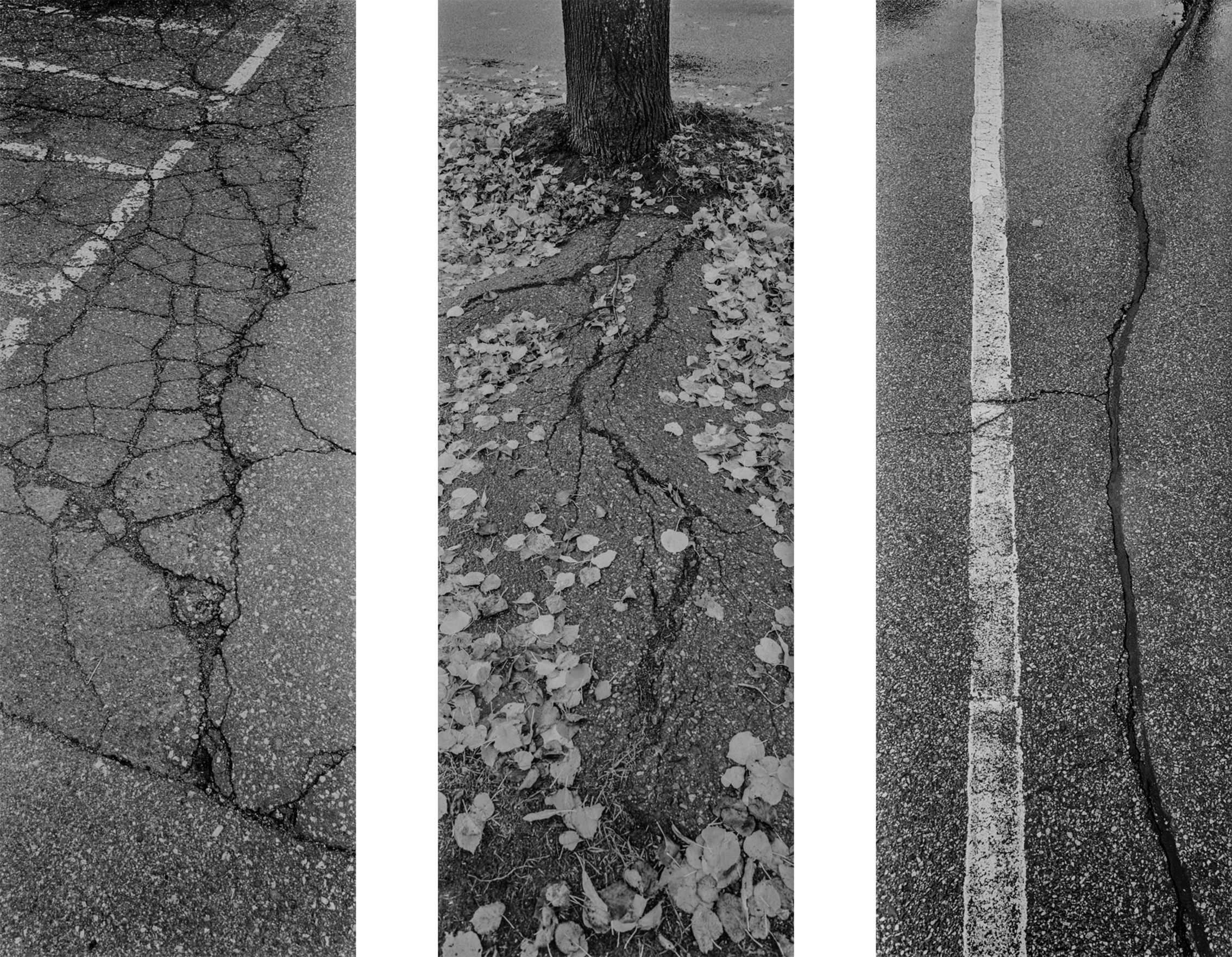
3
There is never a set concretion in these cracks, but a constant scrutiny of the current situation. And to cancel out the one-directional formation in time: to be more complete, or to be never completed. The time and location specificity were deprived by our collaboration, and now they move more freely, go forward and go back, never settle on one destiny or possibility.
Gazing at these negative spaces, I’m seeing a discursive offspring, an alternative way, a transcendental escape. A visual experience that flattens the hierarchy between the initiator and the spectator, that embraces both linearity and parallel connections. By constantly contemplating these cracks, can we extend our effort to escape the fixed conditions of modernity and this destructive encounter with time?
Why are these cracks so narrow? Why do we always have to travel through such narrow gates? And can we really provide a transcendental path from the dichotomy of cracks and roads? Or can we enter into these cracks and become one?
The cracks fall away, step back, blend into the background. They float loosely over the road, on the surface, rupturing the continuity of a cityscape and a timeline that, like a road, is always moving forward.
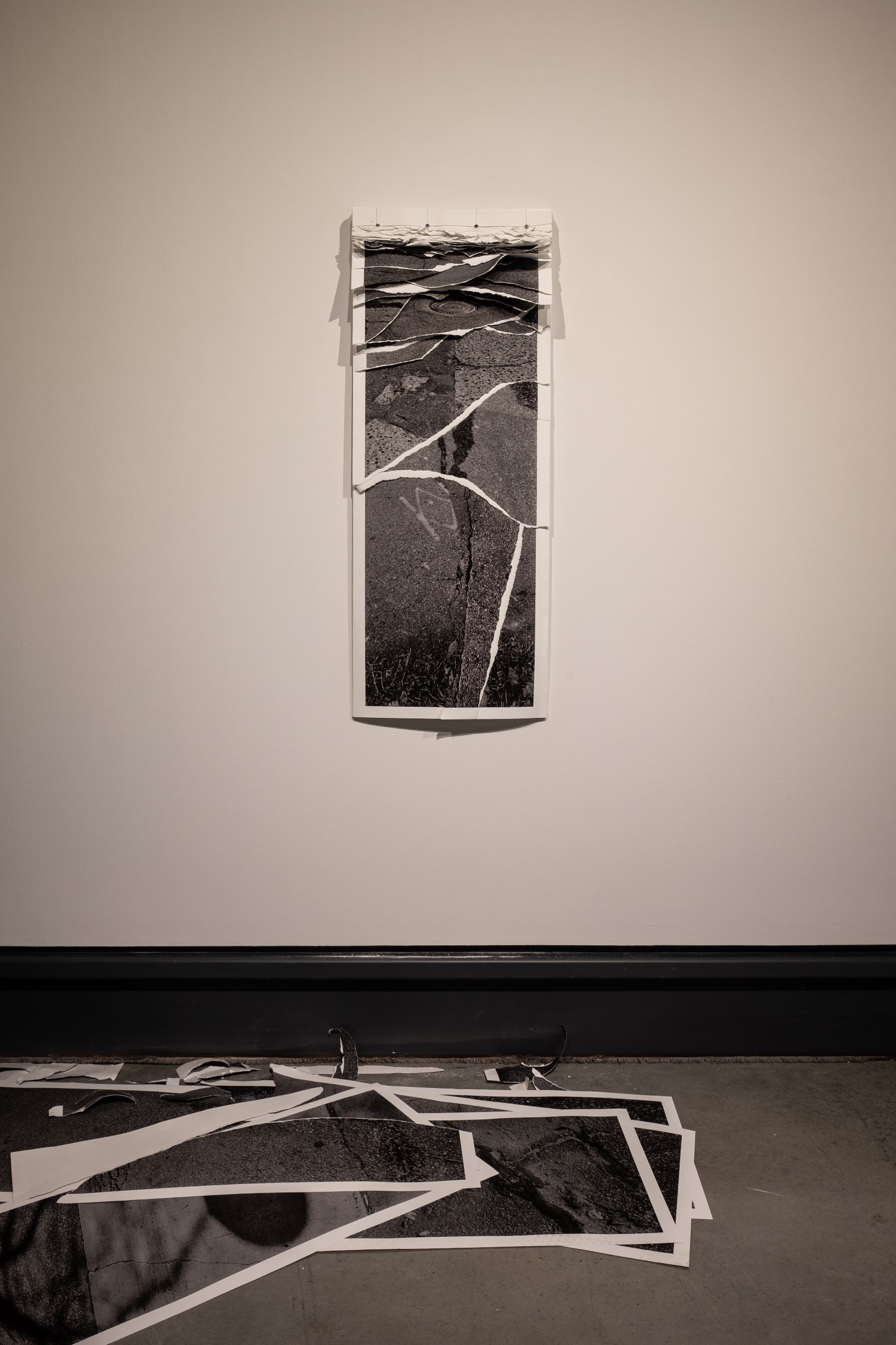
This article is part of the series Seeing Plants: Vision and Botany in Contemporary Art, guest edited by Regan Golden.